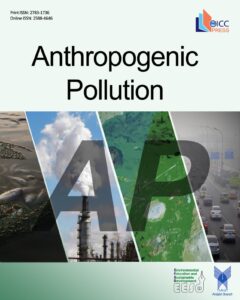Risk Assessment of Heavy Metal in Ambient Air (Case Study : Ahvaz,Iran)
Authors
Abstract
Particulate Matter (PM) is the primary culprit behind reduced air quality in urban areas. Although PM consists of various compounds, heavy metals are essential constituents because of their harmful effects on human health. The purpose of this study was to determine heavy metals concentrations in atmospheric PM10 in ambient air of Ahvaz, Iran. and also assessing their health risk on the resident of Ahvaz. In 2010, the World Health Organization named Ahvaz as the world’s most polluted city. Ambient air was sampled at five locations around the city in winter 2018 and summer 2019 to measure PM10 according to ASTM; D4096 Standard. Further, the air sampling filters were analyzed by the acid digestion method and atomic emission spectroscopy to determine the concentration of 8 heavy metals in the particulates—namely Cu, As, Ni, Pb, Cd, Fe, Zn, and Cr. The PM10 concentrations in ambient air ranged from 22.335 to 463.36μg/m3. The lowest concentration was observed at Station 3 northeast of the city in winter and the highest at Station 1 in the city center in the summer. The IRIS method was used in accordance with the EPA Guidelines for risk assessment. The results of non-carcinogenic risk assessment indicated that HQ is greater than 1 for long-term hazard and less than 1 for short-term hazard. As for carcinogenic risk assessment, the lifetime risk of developing or dying from cancer is 519 per 1 million among the residents of Ahvaz, which exceeds the permissible limits according to most standards—that state some figure between 1 and 100 per 1 million.




